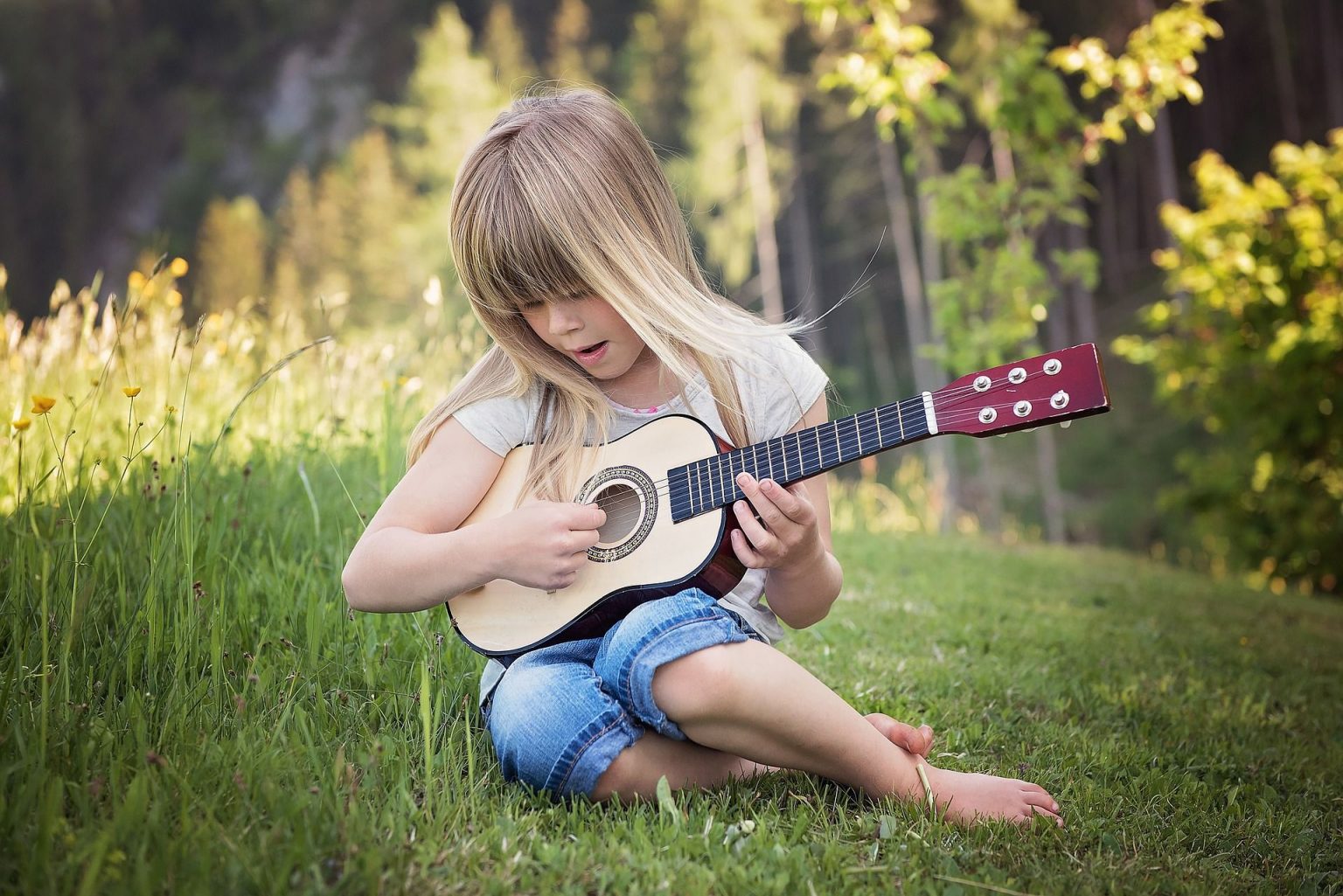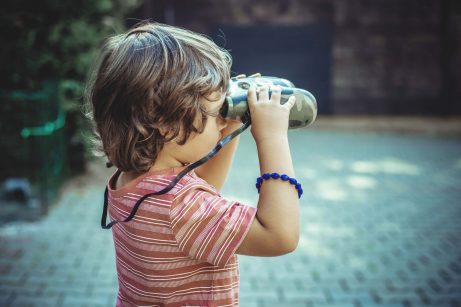Music for the Montessori Child

The Montessori curriculum covers a variety of subjects, including music – although it is often overlooked. Creative arts such as music or visual arts are often sadly undervalued in education, both traditional and Montessori – when in actuality, they bring a complex array of rich experiences and hold vast importance in your child’s development, as well as their entire life.
Benefits of Bringing Music to Children
Music is key for refining a child’s auditory sense. The Montessori sensorial curriculum begins this work, but music brings much more complex stimuli, teaching a child to understand different qualities of sound: colour, volume, tone. This enhances other aspects of brain development, especially language and communication, as well as mathematical thinking. Creating music, whether through singing or instrument play, also integrates the mind and body and enriches our motor skills – which, as we know, is the foundation of building human intelligence.
Of course, music is much more than just knowledge and skill – it brings beauty, communicates emotion, and carries our culture. When children come to enjoy music of a particular time and place, they enrich their experience of humanity. Learning about different instruments and how they are played brings children into contact with their culture and history.
Incorporating Music in your Home
There are numerous ways of incorporating music into your child’s daily routine, such as:
- Child-sized instruments
- Music classes
- Playing music within their environment
Introducing Musical Instruments

Simple music instruments should have a permanent place in your child’s space. Ideally, they should be child-sized, beautiful and high quality, producing clear sound; if they are tuned instruments, the tone should also be very accurate. Initially, this may sound overwhelming and expensive, and it may not be possible to purchase an array of professional quality instruments. In this, we recommend focusing on quality over quantity. You are most likely to find good quality percussion instruments, such as claves, shakers, maracas, small drums, tambourines and bells; small flutes and whistles often have a beautiful sound, as do simple metallophones or kalimbas.
There are also many DIY options that can work wonderfully, particularly for shakers, drums and tone sticks. There are many resources on how to make instruments, and this could be a fun craft activity to do together with your child.

Explore the fundamentals of Montessori parenting with this free video by Sylvia Arotin, offering insights and strategies to empower and educate your child.
Not only does playing instruments develop your child’s auditory skills and fine motor skills (there is a lot of hand-eye coordination required to hit a drum with a drumstick, and delicate finger movements to strike a castanet), it can become a wonderful social time in your family. You don’t need to be an opera singer to take great joy in singing and playing music together with your child.
When introducing musical instruments, make sure to share its name with your child, and show them how to hold and use it properly. Allow plenty of free, age-appropriate exploration, but take away an instrument that your child shows not being ready for – for example, a metallophone should not be banged against the ground or stepped on!
Music Class

Many parents sign up for music classes in early childhood. This gives their children exposure to music styles and instruments they may not have access to otherwise, as well as a wonderful social opportunity: learning to play along with others and follow directions (taking turns, following cues, starting and stopping together). All of this brings an incredible benefit for a child’s development; not to mention it is a lot of fun!
Due to the pandemic, there are options of joining music classes online or even free videos your child can follow along with, on sites such as Youtube. This adds another dynamic to your child’s musical exposure besides free-play. If screen time is limited in your household, songs can provide the same experience without needing a screen. There are CDs available that include directions for your child’s participation, or action and movement songs.
Music in the Environment

There are many ways to incorporate playing music within your home. It is particularly lovely to have somewhere in their space where the child is in control of what and when music plays, whether this is a CD player with a choice of CDs, an iPod loaded with age-appropriate songs, or the opportunity to “ask Alexa”. This gives your child freedom and independence.
When listening to music for pleasure, try to expose your child to various genres. Don’t limit yourself to “children’s music” or simple tunes – like everywhere else, Montessori advises for rich, diverse experiences! Anything is possible from classical to modern, show tunes to acoustic, traditional world to contemporary pop music. Watch for your child’s reactions and turn off music that might disturb or upset them – however, you might be surprised what they find enjoyment in!
Music is a great tool for setting the tone with kids. Play dance music or music with actions when energy needs to be exerted or slower, relaxed music to induce a quiet period or settle down towards bedtime. Music can be a great transitional tool, and it does not have to be professional music – you can try singing a song consistently during routines (such as a bathing song, clean-up song, get-ready-for-lunch song). These provide children with a great reference point and often, they sing along with great gusto.
That said – do not feel the need to fill every moment with music. Remember that silence too has its value and brings us its own freedom and peace. Music should be savoured, not simply exist in the background.
Music is such an integral part of the Montessori Method and your child’s development. With so many ways of incorporating it into your home, there is definitely something to fit your family’s needs.
Written by Leila Smeyatsky


